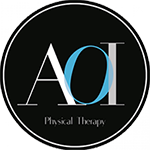Temporomandibular Joint Disorder
Pain in the temper-mandibular joint is often referred to as “TMJ”. There are two joints, one on either side of the face, located in front of your ears where your lower jaw meets the skull. You will be able to feel the joint when you place your fingers in front of your ears on either side of your head and open and close your mouth. The TMJ enables movement of your jaw when you eat your food, talk and sing. It is one of the most commonly used joints in the body.
TMJ disorder is a general term that refers to pain or discomfort in the temporo-mandibular joint area which involves the jaw joint and the muscles surrounding it.
Causes
Common causes of TMJ disorders include:
- Stress: This is the main cause of TMJ pain. Stress leads to habits like clenching and grinding your teeth which can cause muscle spasm and jaw pain. You may not even be aware you are doing this.
- Diseases: Certain diseases like rheumatoid arthritis and osteoarthritis can cause pain in the joint. In both these conditions, the cartilage is lost and the bone surface erodes away.
- Injury to the jaw: Injury can lead to fracture of the condyle and disc displacement.
- Oral habits: Oral habits such as Bruxism (night grinding of teeth) or clenching leads to muscle spasms.
- Bad bite or Malocclusion: Misalignment of the teeth and jaws can cause problems in the way your teeth fit with each other and place the masticatory (chewing) muscles under stress.
Symptoms
You may come across the following symptoms:
- Dull, aching type of pain in the jaw.
- Difficulty in swallowing, biting, opening and closing the mouth.
- Headache and dizziness.
- Clicking and popping sound on opening and closing the mouth.
- Pain in the ears.
- Stiffness in the jaw muscles.
Diagnosis
TMJ is diagnosed by asking questions about your symptoms, reviewing your medical history and performing a physical examination. Imaging may be ordered in certain situations.
Treatment
Most patients with TMJ dysfunction are effectively treated with the following measures:
- Mouth guards are suggested for eliminating the effects of clenching or grinding the teeth.
- Medications: Your doctor may prescribe anti-inflammatories or muscle relaxants.
- Physical therapy.
- Orthodontic corrections.
- In rare cases surgery may be recommended when all nonsurgical measures have failed.














